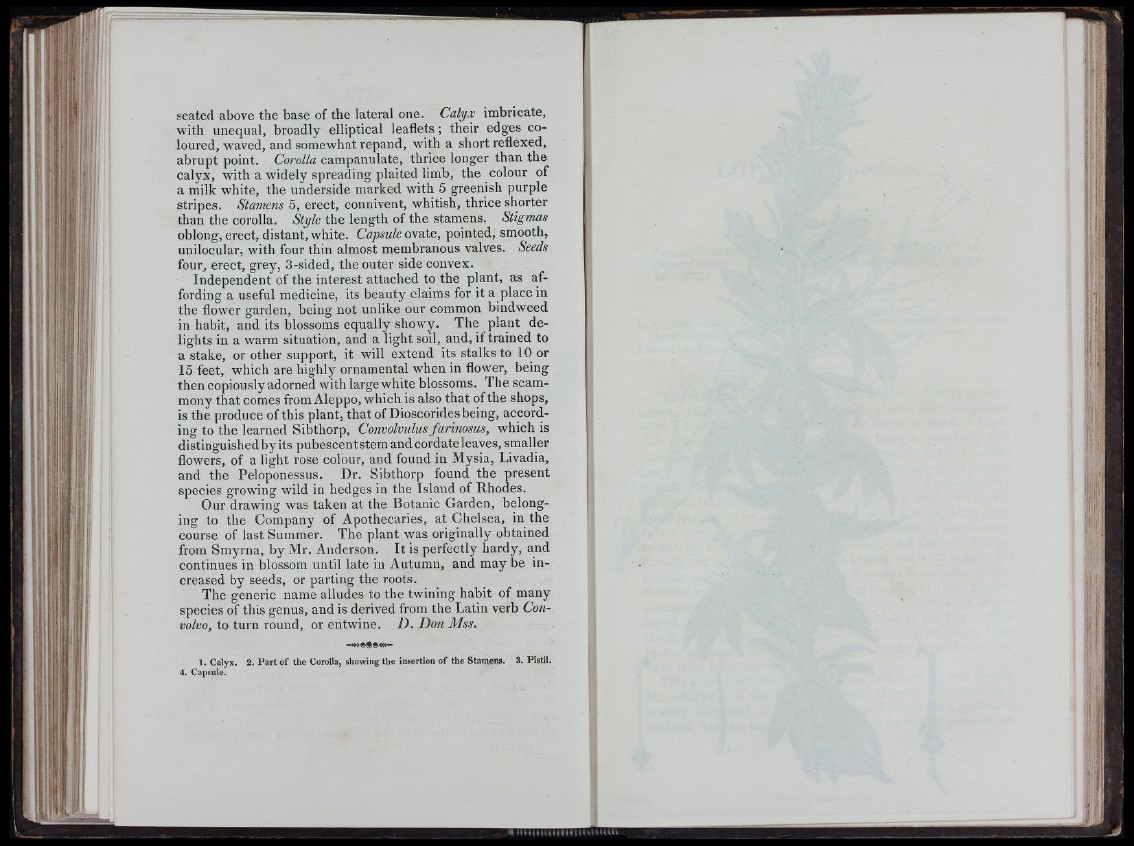
seated above the base of the lateral one. Calyx imbricate,
with unequal, broadly elliptical leaflets ; their edges coloured,
waved, and somewhat repand, with a short reflexed,
abrupt point. Corolla campanulate, thrice longer than the
calyx, with a widely spreading plaited limb, the colour of
a milk white, the underside marked with 5 greenish purple
stripes. Stamens 5, erect, connivent, whitish, thrice shorter
than the corolla. Ari/fe the length of the stamens. Stigmas
oblong, erect, distant, white. Capsule o\ate, pointed, smooth,
unilocular, with four thin almost membranous valves. Seeds
four, erect, grey, 3-sided, the outer side convex.
Independent of the interest attached to the plant, as affording
a useful medicine, its beauty claims for it a place in
the flower garden, being not unlike our common bindweed
in habit, and its blossoms equally showy. The plant delights
in a warm situation, and a light soil, and, if trained to
a stake, or other support, it will extend its stalks to 10 or
15 feet, which are highly ornamental when in flower, being
then copiously adorned with large white blossoms. The scammony
that comes from Aleppo, which is also that of the shops,
is the produce of this plant, that of Dioscorides being, according
to the learned Sibthorp, Coitvolvulus farinosus, which is
distinguished by its pubescentstem and cordateleaves, smaller
flowers, of a light rose colour, and found in Mysia, Livadia,
and the Peloponessus. Dr. Sibthorp found the present
species growing wild in hedges in the Island of Rhodes.
Our drawing was taken at the Botanic Garden, belonging
to the Company of Apothecaries, at Chelsea, in the
course of last Summer. The plant was originally obtained
from Smyrna, by Mr. Anderson. It is perfectly hardy, and
continues in blossom until late in Autumn, and may be increased
by seeds, or parting the roots.
The generic name alludes to the twining habit of many
species of this genus, and is derived from the Latin verb Convolve,
to turn round, or entwine. D. Don Mss.
J. Calyx. 2 . P a rt o f the Corolla, showing the insertion o f the Stamens. 3. PistU.
4. Capsule.
fiM
iil
r ^
u;*• -II1